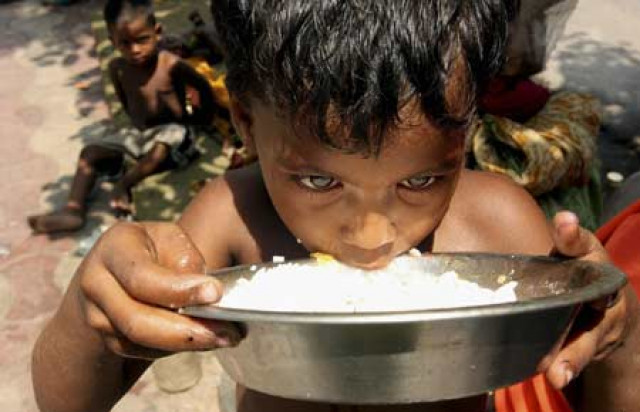The fundamental right of the citizen to food, shelter and water is enshrined in the constitution.
With an increasing number of people falling below the poverty line - without any social safety nets in place - the number of hungry men, women and children has rapidly increased in the last decade.
The extreme disparity between the rich and poor, a lack of employment opportunities and a serious shortage of skilled labour has caused a rise in the number of hungry people in the country.
The cost of living
Factory owners hire workers on a contractual basis and avoid offering them benefits awarded to full-time employees, especially in Karachi. This forces workers into a cycle of poverty.
There is a huge influx of unskilled labour in Karachi from the rest of the country. A big chunk of workers’ salaries are spent on housing, costly transport and acquiring clean drinking water. Another large portion is spent on health, which again is also expensive, sub-standard and unregulated –partly because it is private and partly due to quacks.
The plight of industrial workers and agricultural labourers
At the end of the day, the industrial worker who hardly earns Rs7,000 in wages, ends up spending most of his money on himself. His family, which numbers eight people on average, hardly get any cash for food. Most women and children live in villages, where they do not have either health or education facilities.
Villages have a large population of female agricultural workers. Due to hard labour, childbearing and a lack of nutritious food, women are developing severe deficiencies and anaemia. Since women are the backbone of agriculture, their nutrition is an important factor in production. My observation in Sindh, most recently, is that most children (almost 90 per cent) are suffering from severe malnutrition and stunted growth. Almost 100 per cent of women have severe anaemia, malnutrition and serious calcium deficiency. Male agricultural workers also have moderate anemia and protein calorie malnutrition.
It seems that the waderas (landed elite) think of agricultural workers as dispensible commodities, merely cheap labour. In Sindh, the most vulnerable people have to be the women and children working in agriculture. Often, the men go to cities like Karachi to become unskilled industrial labourers. The link between hunger and injustice, with regard to elitist industrialists and exploitative landlords is directly responsible for the sheer ugly, screaming picture of death and disease because of hunger in Sindh.
No industrial policies, fancy speeches or ad hoc promises by elitist rulers will bring any relief to the hungry or poor of Pakistan. Labour laws have to be implemented by the elected government, otherwise there will be God’s justice only. The floods have worsened the state of hunger and the government will not be able to handle the hunger riots, which will worsen in Sindh. Already, the statistics for daily deaths due to riots for Watan cards is at least two per day.
Hungry for some rights
Exploitative waderas and industrialists are making the hunger situation in the country even worse.



COMMENTS
Comments are moderated and generally will be posted if they are on-topic and not abusive.
For more information, please see our Comments FAQ